Saw discs
When choosing a saw blade, decide on the type of saw and the material you plan to cut. In our offer you will find blades for wood, plastic, composite materials and carbide saw blades for metals. Saw blades with SK blades (made of sintered tungsten carbide) ensure constant sharpness and high blade durability.
Wood cutting discs are divided into discs suitable for cross-cut or rip cuts, or you can use universal discs for both types of cuts. Circular saw blades are suitable for firewood preparation and do not get dull even due to minor dirt.
Circular saw blades and mitre saw blades are primarily used for joinery work. But the right saw blade will turn your saw into a tool suitable for cutting plastic or metal. Special blades, such as a grooving saw blade or a pre-cutting blade that prevents burrs on the other side of the cut, are also used in the joinery workshop.
When deciding what to cut cetris boards with, give preference to diamond tooth blades. They are not subject to such rapid wear and tear.
Product sorting
List of products

CMT Orange XTreme | Saw blade ø 165x1,6/2,2x20 mm Z56 TFZ/TCG with trapezoidal negative teeth, ideal for clean cuts of laminated and particleboard without pre-cutting.

CMT Orange | Saw blade ø 190x1,6/2,6x30 mm Z12 WZ/ATB is for fast longitudinal cuts in wooden materials. It excels in its efficiency and throughput, making it ideal for rough cutting.



CMT saw blade ø 160x1,6/2,2x20 mm Z40 WZ/ATB - for clean cross cuts in wood and wood-based materials, alternating helical tooth ensures clean and precise cuts.

The CMT Laminate Wheel Set - main wheel ø 300/30 mm Z96 TCG/TFZ + pre-cutting wheel ø 120 mm Z24 Flat offers the perfect solution for cutting laminate and chipboard without burrs thanks to the combination of main and pre-cutting wheel.

The CMT Laminate Wheel Set - main wheel ø 300/30 mm Z96 TCG/TFZ + pre-cutting wheel ø 120 mm Z24 Flat offers the perfect solution for cutting laminate and chipboard without burrs thanks to the combination of main and pre-cutting wheel.

CMT Saw blade ø 300x2,2/3,2x30 mm Z96 TCG/TFZ is designed for precise and smooth cuts of laminate, plastic and non-ferrous materials. The negative face angle ensures a gentle passage through the material without tearing.

Stehle | Saw blade ø 216x2.2/2.8x30 mm Z56 (TFZ/TCG) -6°negative is ideal for precise cuts of laminates, aluminum, MDF and chipboard. The perfect choice for mitre saws.

Stehle | Saw blade ø 160x1.6/2.2x20 mm Z56 (TFZ/TCG) is ideal for precise cuts in laminates, MDF and chipboard. The perfect choice for plunge saws and circular saws.



Stehle | Saw blade ø 160x1.2/1.6x20 mm Z48 teeth type TR-F-FA for clean and precise cuts of plastic profiles and boards.

Stehle | Saw blade ø 160x1.6/2.2x20 mm Z56 (TFZ/TCG) is ideal for precise cuts in laminates, MDF and chipboard. The perfect choice for plunge saws and circular saws.

CMT Orange | Universal saw blade ø 190x1,6/2,6x30 mm Z24 WZ/ATB is for fast longitudinal and transverse cuts in wooden materials. It excels in its efficiency and throughput, making it ideal for rougher cutting.

CMT | ITK Ultra thin saw blade ø 250x1,6/2,4x30 mm Z80 with alternating helical teeth (ATB/WZ). High-quality saw blade with ultra-thin design for efficient cross cuts. Suitable for soft and hard wood, OSB and plywood.

CMT | ITK Ultra thin saw blade ø 250x1,6/2,4x30 mm Z60 with alternating helical teeth (ATB/WZ). High-quality saw blade with ultra-thin design for efficient cross cuts. Suitable for soft and hard wood, OSB and plywood.

CMT | ITK Ultra thin universal saw blade ø 250x1,6/2,4x30 mm Z42 with alternating helical teeth (ATB/WZ). High-quality saw blade with ultra-thin design for efficient longitudinal and transverse cuts. Suitable for soft and hard wood, OSB and plywood.

CMT | Ultra thin saw blade ø 300x1,8/2,6x30 mm Z24 WZ/ATB - ideal for longitudinal cuts in wood and wood-based materials. The alternately inclined tooth guarantees a solid cut quality.

CMT | ITK Ultra thin saw blade ø 250x1,6/2,4x30 mm Z24 WZ/ATB - ideal for longitudinal cuts in wood and wood-based materials. The alternately inclined tooth guarantees a solid cut quality.

CMT ITK | Diamond saw blade ø 250x1,8/2,4x30 mm Z16 with alternating trapezoidal and straight teeth (TCG/TFZ), for cutting extra hard materials such as DuPont Corian®, cement-bonded and cement-fibreboard, MDF, DTD and plasterboard.

CMT Orange | Saw blade ø 250x1,8/2,8x30 mm Z16 (WZ/ATB) with alternating helical teeth, for fast and efficient cuts in construction timber, soft and hard wood, including materials with occasional concrete or nails.

The Stehle saw blade ø 250x2.2/3.2x30 mm Z80 TCG/TFZ is ideal for clean and precise cuts in laminate, DTD and MDF. Trapezoidal teeth ensure high cutting quality and long service life.

CMT Orange | Saw blade ø 250x2,5/3,2x30 mm Z80 TCG/TFZ negative -6° for clean cuts on laminates, plastics and non-ferrous metals with soundproof construction for quiet operation and precise cutting.

CMT CHROME 250/30 mm diameter Z80 saw blade with alternating bevel teeth (ATB/WZ), chrome finish and soundproofing, ideal for cross-cutting softwood and hardwood.

CMT CHROME | Saw blade ø 250x2,2/3,2x30 mm Z60 ATB/WZ is ideal for cross-cutting softwood and hardwood.

CMT CHROME | Saw blade ø 250x2,2/3,2x30 mm Z40 with alternating helical teeth (ATB/WZ), chrome surface and soundproofing, ideal for longitudinal and transverse cuts of softwood and hardwood.

CMT Industrial | Saw blade ø 250x2,2/3,2x30 mm Z80 WZ/ATB with negative face angle -2°, for clean cuts of laminated and veneered materials without pre-cutting.

CMT Orange | Saw blade ø 250x2,2/3,2x30 mm Z60 WZ/ATB is designed for precise and smooth finishing cuts in wood and wooden boards. The perfect choice for finishing with an emphasis on surface quality.

CMT Orange | Saw blade ø 250x2,2/3,2x30 mm Z40 WZ/ATB for precise and smooth finishing cuts in wood and wooden boards. The perfect choice for finishing with an emphasis on surface quality.

CMT saw blade ø 210x1,8/2,8x30 mm Z24 WZ/ATB - ideal for cross and rip cuts of wood and wood-based materials. The alternately inclined tooth guarantees a solid cut quality.

CMT Tool Cleaning Emulsion FORMULA 2050 is a highly effective product designed to remove resin, pitch and other contaminants from woodworking tools. This non-toxic and non-flammable emulsion not only cleans, but also leaves a corrosion-resistant protective coating on the tools, thus extending their life and sharpening intervals.

CMT | Wood slip FORMULA 998 is a special lubricant designed to improve the feed of wood materials during machining. It prevents resin and sawdust from sticking to tools, preserves metal parts of machines and repels moisture. Application is possible with a sprayer or sponge on the work surfaces of the tables, which ensures a smooth feed of material and a clean finished surface.

Stehle | Saw blade ø 160x1.2/1.6x20 mm Z48 teeth type TR-F-FA for clean and precise cuts of plastic profiles and boards.

Stehle | Saw blade ø 160x1.6/2.2x20 mm Z48 KKS, especially for precise cuts of plastic materials.

Stehle | The ø 1601.2/1.8x20 mm Z24 FWS saw blade for cordless plunge saws in the G3 configuration (1x flat tooth, 2x alternating teeth) is universal for cross and longitudinal cuts in various types of wood.

Stehle | Saw blade ø 160x1.6/2.2x20 mm Z48 (TFZ/TCG) is ideal for precise cuts in laminates, MDF and chipboard. The perfect choice for plunge saws and circular saws.

Stehle | Saw blade ø 160x1.6/2.2x20 mm Z56 (TFZ/TCG) is ideal for precise cuts in laminates, MDF and chipboard. The perfect choice for plunge saws and circular saws.

Stehle | Saw blade ø 160x1.2/1.8x20 mm Z48 FWS for cordless plunge saws when cutting board materials (laminate) in G3 configuration (1x flat tooth, 2x alternating teeth) and clean cross cuts in various types of wood.

CMT Orange | Saw blade ø 260x2,5/3,2x30 mm Z80 TCG/TFZ negative -6° is designed for clean cuts in laminates, plastics and non-ferrous metals with a soundproof construction for quiet operation and precise cutting.

CMT Orange | Saw blade ø 260x1,8/2,8x30 mm Z28 WZ/ATB is optimized for fast and efficient longitudinal cuts of solid wood with high cutting performance.

CMT Orange | Saw blade ø 254x2,5/3,2x30 mm Z80 TCG/TFZ negative for clean cuts on laminates, plastics and non-ferrous metals with soundproof construction for quiet operation and precise cutting.

CMT Industrial | Saw blade ø 254x1,8/2,2x30 mm Z60 WZ/ATB with negative inclination is designed for precise transverse and longitudinal cuts on mitre saws. Reduces cutting aggressiveness, minimizes kickback and ensures a smooth, burr-free cut.

CMT Orange saw blade ø 254x1,8/2,4x30 mm Z48 WZ/ATB -5° Neg is designed for precise and smooth cutting of materials. Ideal for mitre saws where the emphasis is on efficient and quality cuts without unnecessary burrs.

Stehle | Saw blade ø 216x1.8/2.8x30 mm Z30 WZ/ATB for universal cutting of solid wood and wooden materials. Alternating ground teeth provide a clean and efficient cut without excessive heat.

The CMT Laminate Wheel Set - main wheel ø 300/30 mm Z96 TCG/TFZ + pre-cutting wheel ø 120 mm Z24 Flat offers the perfect solution for cutting laminate and chipboard without burrs thanks to the combination of main and pre-cutting wheel.

The CMT saw blade ø 300x2.5/3.2x30 mm Z84 TCG/TFZ is the ideal choice for clean and precise cuts in compact materials such as Corian® and other thick-walled plastics where surface quality is a priority.

CMT CHROME saw blade ø 300x2,2/3,2x30 mm Z96 TCG/TFZ is ideal for clean and precise cuts in laminate, DTD and MDF. Trapezoidal teeth and chrome-plated surface ensure high cutting quality and long service life.

CMT Saw blade ø 300x2,2/3,2x30 mm Z96 TCG/TFZ is designed for precise and smooth cuts of laminate, plastic and non-ferrous materials. The negative face angle ensures a gentle passage through the material without tearing.

The CMT Industrial saw blade ø 300x2,2/3,2x30 mm Z72 TFZ/TCG is ideal for cutting laminate and particleboard with a clean, burr-free surface thanks to the trapezoidal tooth shape. The positive angle of the tooth face contributes to a smooth passage through the material.

CMT CHROME saw blade ø 300x2,2/3,2x30 mm Z72 WZ/ATB is designed for clean and precise cuts in cross direction. The chrome-plated surface reduces adhesive and resin adhesion, extending the life of the disc.

CMT Industrial | Saw blade ø 300x2,2/3,2x30 mm Z36 WZ/ATB is designed for universal cutting with high surface quality and reduced noise. Suitable for a combination of longitudinal and transverse cuts with efficient sawdust removal.

CMT Industrial saw blade ø 300x2,2/3,2x30 mm Z24 WZ/ATB is designed for fast and efficient longitudinal cuts with maximum stability and safety. The chip limiter and expansion grooves ensure a clean cut and minimise kickback.

CMT Orange saw blade ø 210x1,6/2,8x30 mm Z64 WZ/ATB is ideal for fine finishing cuts in wood and board materials. This blade provides an ultra-smooth cut for a precise, high-quality finish.

CMT Orange saw blade ø 210x1,6/2,8x30 mm Z48 WZ/ATB is designed for smooth finishing cuts in wood and board materials. The perfect choice for finishing with high surface quality.

The CMT Orange saw blade ø 210x1,8/2,8x30 mm Z36 WZ/ATB is designed for versatile cutting of wood materials with a good combination of speed and quality. A great choice for routine cutting.

CMT Orange | Saw blade ø 190x1,6/2,8x30 mm Z64 TFZ/TCG is designed for clean and precise cuts in hard materials such as laminate, plastic and aluminium. Suitable for table and mitre saws when working with abrasive materials.

CMT Orange saw blade ø 190x1,6/2,6x30 mm Z64 WZ/ATB is ideal for ultra-fine finishing cuts in wood and board materials. A great choice for smooth surfaces and precise finishes.

The CMT Orange saw blade ø 190x1,6/2,2x30 mm Z40 WZ/ATB is designed for precise and smooth finishing cuts in wood and wooden boards. The perfect choice for finishing with an emphasis on surface quality.

The CMT saw blade ø 190x1,6/2,6x20 mm Z12 WZ/ATB is ideal for fast longitudinal cuts in softwood and hardwood. With a low tooth count, it provides high cutting speed while maintaining quality.

CMT Orange saw blade ø 216x1,8/2,8x30 mm Z80 TFZ/TCG is ideal for ultra-fine cuts in hard materials such as laminate, plastic and aluminium. This blade is designed for clean, burr-free finishing cuts.

CMT Orange saw blade ø 216x1,8/2,8x30 mm Z64 TCG/TFZ is designed for clean cuts in materials such as aluminium, laminate and plastic. Suitable for table and mitre saws where precise control over the cut is required.

CMT Orange saw blade ø 216x1,8/2,8x30 mm Z80 WZ/ATB -5° Neg is ideal for ultra-fine and clean final cuts. Perfect for mitre saws where maximum cut quality is required.

CMT Orange wood saw blade ø 216x1,8/2,8x30 mm Z64 WZ/ATB -5° Neg is ideal for fine and clean final cuts. Great for mitre saws where a smooth, precise, burr-free cut is required.

CMT Orange saw blade ø 216x1,8/2,8x30 mm Z48 WZ/ATB -5° Neg is designed for precise and smooth cutting of wooden materials. Ideal for mitre saws where the emphasis is on efficient and quality cuts without unnecessary burrs.

CMT Orange | Saw blade ø 165x1,6/2,2x20 mm Z40 WZ/ATB for precise and fine final cuts. The alternating helical teeth ensure a smooth, burr-free cutting surface, ideal for applications where high surface quality is important. The disc is suitable for various types of wood and wood-based materials.

CMT Orange | Saw blade ø 165x1,6/2,2x20 mm Z56 TFZ/TCG (trapezoidal + straight for for precise and clean cutting of laminate, plastics and non-ferrous metals. The TCG tooth geometry minimizes burrs and ensures consistent, smooth cuts, making it the ideal tool for finishing jobs with high surface quality.

CMT | ITK diamond saw blade ø 160x1,8/2,4x20 mm Z4 TFZ/TCG (alternating trapezoidal and straight teeth) is designed for cutting extra hard materials such as cement-bonded particleboard, cement-fibreboard, DuPont Corian®, plasterboard, MDF, DTD, and various sandwich panels.

CMT | ITK diamond saw blade ø 160x1,8/2,4x20 mm Z10 TFZ/TCG (alternating trapezoidal and straight teeth) is designed for cutting extra hard materials such as cement-bonded particleboard, cement-fibreboard, DuPont Corian®, plasterboard, MDF, DTD, and various sandwich panels.

CMT XTreme | Saw blade ø 160x1,6/2,3x20 mm Z24 WZ/ATB for demolition work is designed for maximum durability and efficiency when cutting in demanding conditions such as rebuilding and demolition projects. The blade can handle up to 20 times more cuts than competing products, thanks to its solid tooth geometry and low weight, which ensures resistance to impact with metal elements in wood, such as nails.

CMT Industrial | Saw blade ø 160x1,6/2,0x20 mm Z30 FWF is designed for dry cutting of ferrous and non-ferrous metals with high precision. The special tooth type together with high-quality carbide blades ensure excellent cutting quality and long blade life, even when working with difficult materials such as steel and cast iron.

CMT XTreme | Saw blade ø 160x1,4/1,8x20 mm Z40 TFZ/TCG (trapezoidal + straight) for precise and clean cuts in stainless steel and other metals. The design with a combination of trapezoidal and straight teeth minimizes burrs and ensures smooth cutting of metal materials, delivering excellent results with high surface quality.

CMT saw blade ø 165x1,6/2,2x20 mm Z56 WZ/ATB - for ultra-clean cross-cuts in wood and wood-based materials, alternating helical tooth ensures a clean and precise cut.

CMT saw blade ø 165x1,6/2,2x20 mm Z24 WZ/ATB - ideal for cross and rip cuts of wood and wood-based materials. The alternately inclined tooth guarantees a solid cut quality.

CMT | Ultra-thin saw blade ø 165x1,1/1,7x20 mm Z36 WZ/ATB - ideal for cross-cuts in wood and wood-based materials, not suitable for longitudinal cuts, except for very thin materials.

CMT | Wheel for Corian and plastics ø160x1,6/2,2x20mm Z48 TFZ/TCG. Ideal for precise formatting of Corian and thick-walled plastics. Trapezoidal teeth guarantee a clean and smooth cut without burrs. Suitable for artificial stone and acrylics.

CMT saw blade ø 160x1,6/2,2x20 mm Z56 TFZ/TCG - ideal for ultra-clean cutting of laminate, non-ferrous metals and plastics. Trapezoidal teeth and negative face angle ensure a precise and clean cut, minimizing chipping of laminate and other materials.

CMT saw blade ø 160x1,6/2,2x20 mm Z40 TFZ/TCG is ideal for precision cutting of laminate, non-ferrous metals and plastics. Trapezoidal teeth and negative face angle ensure a precise and clean cut, minimizing chipping of laminate and other materials.

CMT saw blade ø 160x1,6/2,2x20 mm Z24 WZ/ATB - ideal for cross and rip cuts of wood and wood-based materials. The alternately inclined tooth guarantees a solid cut quality.

CMT saw blade ø 160x1,6/2,2x20 mm Z12 WZ/ATB - ideal for longitudinal cuts in wood and wood-based materials. With 12 teeth, it allows fast and smooth cutting, but is not designed for applications where the quality of the cutting surface is important.

CMT saw blade ø 160x1,6/2,2x20 mm Z28 WZ/ATB - ideal for cross and rip cuts of wood and wood-based materials. The alternately inclined tooth guarantees a solid cut quality.

CMT saw blade ø 160x1,6/2,2x20 Z56 WZ/ATB - for ultra-clean cross-cuts in wood and wood-based materials, the alternating helical tooth ensures a perfectly clean and precise cut.

CMT saw blade ø 160x1,6/2,2x20 mm Z40 WZ/ATB - for clean cross cuts in wood and wood-based materials, alternating helical tooth ensures clean and precise cuts.

Festool | Saw blade ø 168x1.2/1.8x20 mm Z52 FWF with flat teeth with partial bevel, cutting width 1.8 mm, body thickness 1.2 mm and negative rake angle -5°, ideal for clean cuts in aluminum profiles and plastic materials.

Festool | Saw blade ø 168x1.2/1.8x20 mm Z52 with trapezoidal teeth (TFZ/TCG), with a cutting width of 1.8 mm and a negative rake angle of -5°, is ideal for clean cuts in plastic materials and laminates.

Festool | Saw blade ø 168x1.2/1.8x20 mm sZ42 WD (Wood Diamond) for Festool TS 60 plunge-cut saws is ideal for clean, burr-free cross cuts in solid wood and boards with a melanin finish.

Festool | Saw blade ø 168x1.2/1.8x20 mm Z28 WZ for TS 60 plunge-cut saws, with a cutting width of 1.8 mm, a body thickness of 1.2 mm and a tooth face angle of 15°, is ideal for universal cutting of various wooden materials.

Festool | Saw blade ø 168x1.2/1.8x20 mm Z16 WZ mm Z16 WZ for plunge saws with a cutting width of 1.8 mm, a body thickness of 1.2 mm and a tooth face angle of 20° is ideal for fast longitudinal cuts in solid wood with minimal effort.

Saw blade for longitudinal cuts in wood or rough cutting where the quality of the cut is not important.

Universal saw blade for cutting wood, can handle longitudinal and transverse cuts, but the transverse cut will be of low quality.

Mafell | PSaw blade ø 162x1.2/1.8x20 Z48 WZ/ATB for proper pre-cutting function in the MT 55 saw and precise cutting of laminate and other board materials without burrs.
Listing controls
Frequently Asked Questions
First, find out what blade and clamping hole diameter your saw requires. This is crucial to ensure that the blade fits correctly in the saw. Next, choose a saw blade according to the material you will be cutting with it. This determines the thickness of the disc, the shape and the number of teeth. Read detailed instructions on how to choose a saw blade.
Saw blades are produced for various types of materials - wood, plastic, metal, composites, etc. To achieve a clean and accurate cut, use the appropriate gearing for the material. Wood cutting wheels have different characteristics than those designed for cutting laminate, metal or plastic. Using a suitable blade will also extend its life - there is no risk of dulling or breaking teeth.
If you are going to cut solid wood, you should consider whether it is a longitudinal cut (parallel to the grain) or a cross cut (across the grain). Crosscut saw blades have more teeth for a smooth and clean cut. On the other hand, a blade with fewer teeth is better for longitudinal cutting to make the cut faster and more efficient. We also offer saw blades for universal cutting.
The quality of the cut is mainly influenced by the thickness of the blade and the number of teeth. If you need a smooth and fine cut, choose a blade with more teeth. At the same time, choose thinner blades that do not remove as much material and are suitable for clean and precise wood cutting. For fast cutting where surface quality is not critical, a disc with fewer teeth is sufficient. For thicker materials such as wooden beams, you will get a good cut with thicker discs that do not ripple and are more stable.
When choosing how many teeth on the blade, also consider the diameter of the blade and the thickness of the material. A universal rule of thumb says that there should be at least three teeth in the frame.
A saw blade can last up to several years, depending of course on how often you cut with it. If you plan on frequent use, especially in a professional environment, it's worth investing in a blade with SK blades (carbide teeth) as they last longer and are more durable.
Also be interested in the thickness of the carbide tooth. The thicker the carbide layer, the more times you can sharpen the blade. To extend the life of the saw blade, clean it after each cut and store it in a dry place.

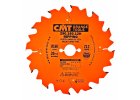
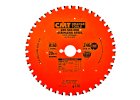
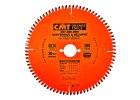
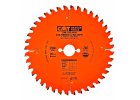
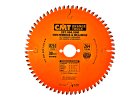
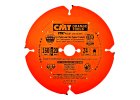



































 Vytvořil Shoptet
Vytvořil Shoptet